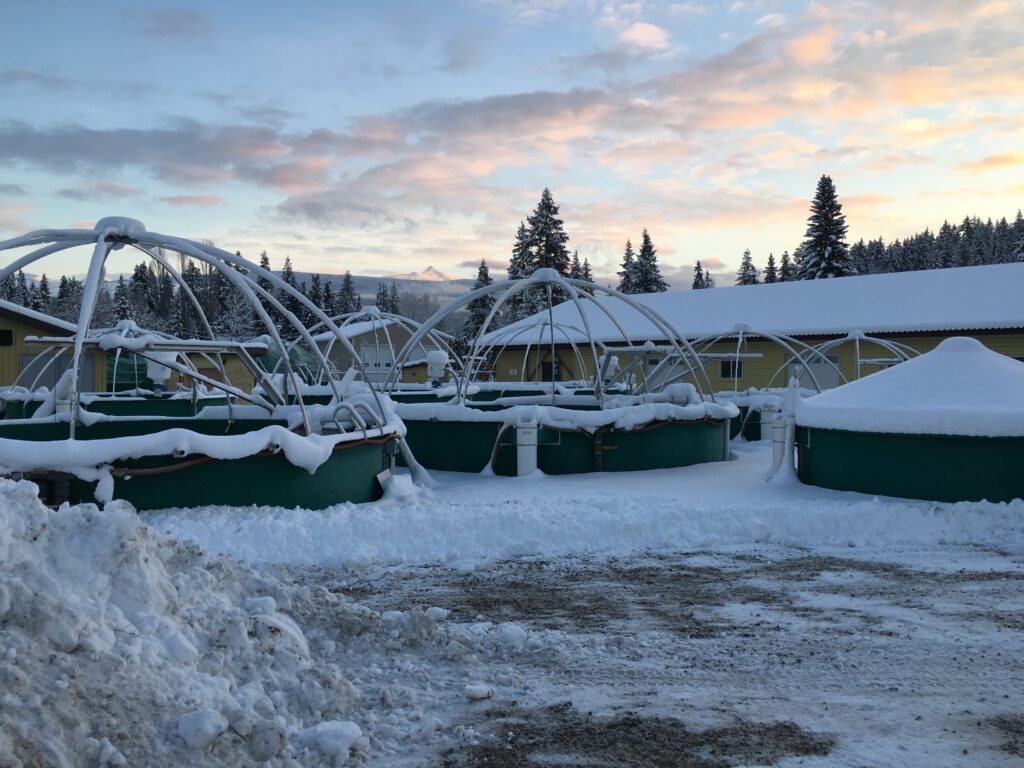This article is part of a series where we take you behind the scenes at the Freshwater Fisheries Society of BC’s hatcheries through the seasons.
Winter weather brings many challenges around the province. Hatchery staff need to deal with every situation – ice storms, reaching outdoor ponds in 60 centimetres of snow, and power outages. Auxiliary staff have all completed their terms, and preparations for the busy spring months are well underway. Hatchery staff are spending much of the winter doing maintenance on stocking trucks, cleaning ponds, and planning for springtime. Here are a few more details about the activities going on at the hatcheries to rear the fish that you’ll find at the end of your line later in the year.
Broodstock Capture
Broodstock and egg-collection activities occur at multiple times throughout the year. In the Lower Mainland, the focus is on capturing steelhead for broodstock over winter. On Vancouver Island, Oyster River anadromous cutthroat are also collected for broodstock at this time. The broodstock are then held at hatcheries until they are ready to spawn, their offspring released in the spring of the following year.
Spawning and Egg Collection
Fraser Valley rainbow trout broodstock held at the Vancouver Island Trout Hatchery are spawned from September through December each year. After the eggs are eyed, staff members begin the “shock and pick” process to remove the small number of eggs that died during early incubation. Pouring the eggs from one bucket to another mechanically shocks any unfertilized and dead eggs into turning white, making them easier to pick out from the healthy fertilized ones in the batch. As hundreds of thousands of eggs are incubated, this process can take quite a while. Healthy eggs collected from this process are shipped to other hatcheries, including the Kootenay and Fraser Valley Trout hatcheries.
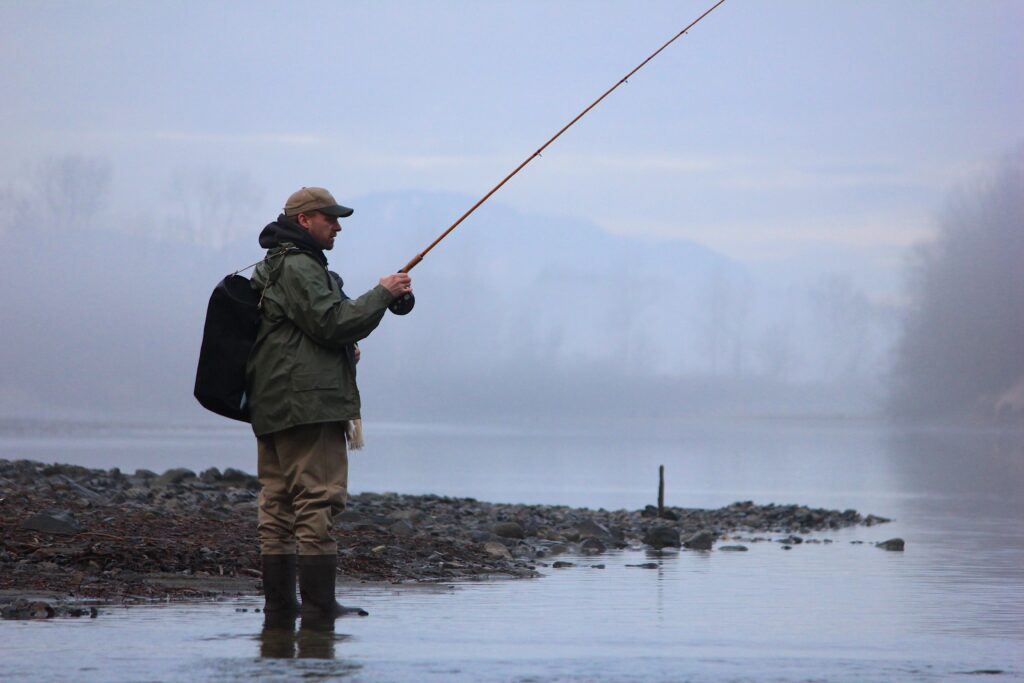
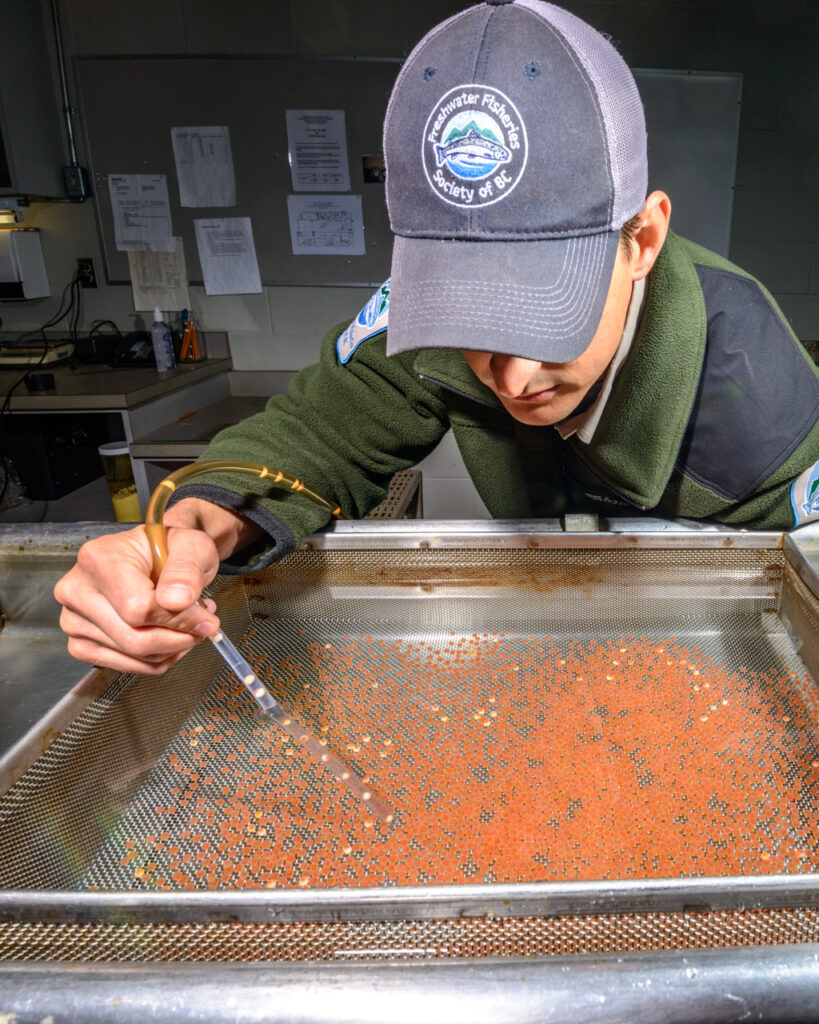
Fin-clipping of Broodfish
Many of the eggs that grow into the rainbow trout stocked by the Society are collected from fish living in one of several closed-system lakes across the province. One example of this is the Blackwater River strain of rainbow trout, which are maintained in Dragon and Premier lakes. Before releasing the yearling broodstock (which have been reared at one of the hatcheries) into these lakes, Society staff clip the fins of the fish so that, at a later date, they can be correctly identified as hatchery fish and their age determined. The clipping process takes staff at the Kootenay and Fraser Valley Trout hatcheries one to two weeks to complete.
Trout Rearing
Our hatcheries are cultivating trout at various stages of growth over the winter. Some are at the alevin stage. At this point they are transferred from incubation trays or jars to long steel troughs or small circular tanks (called combi tanks) indoors, and begin their first feeding. Other fish, at a later stage of development, are being grown to a larger size before being released as yearlings (on average 15 grams) or catchable-sized fish.
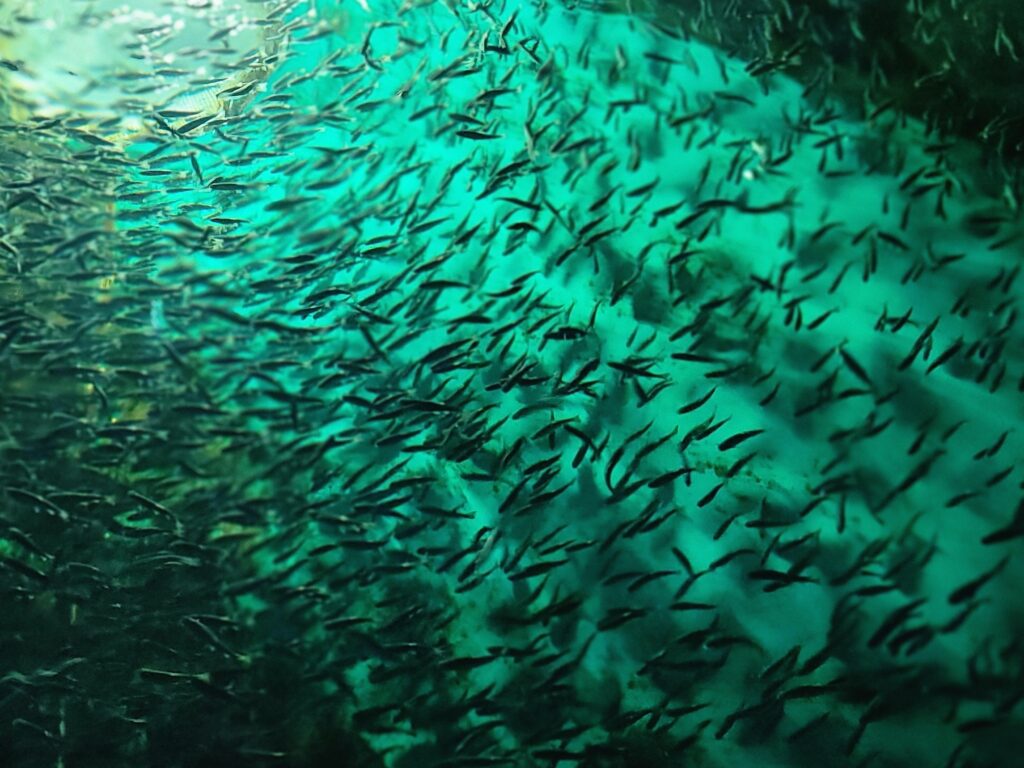
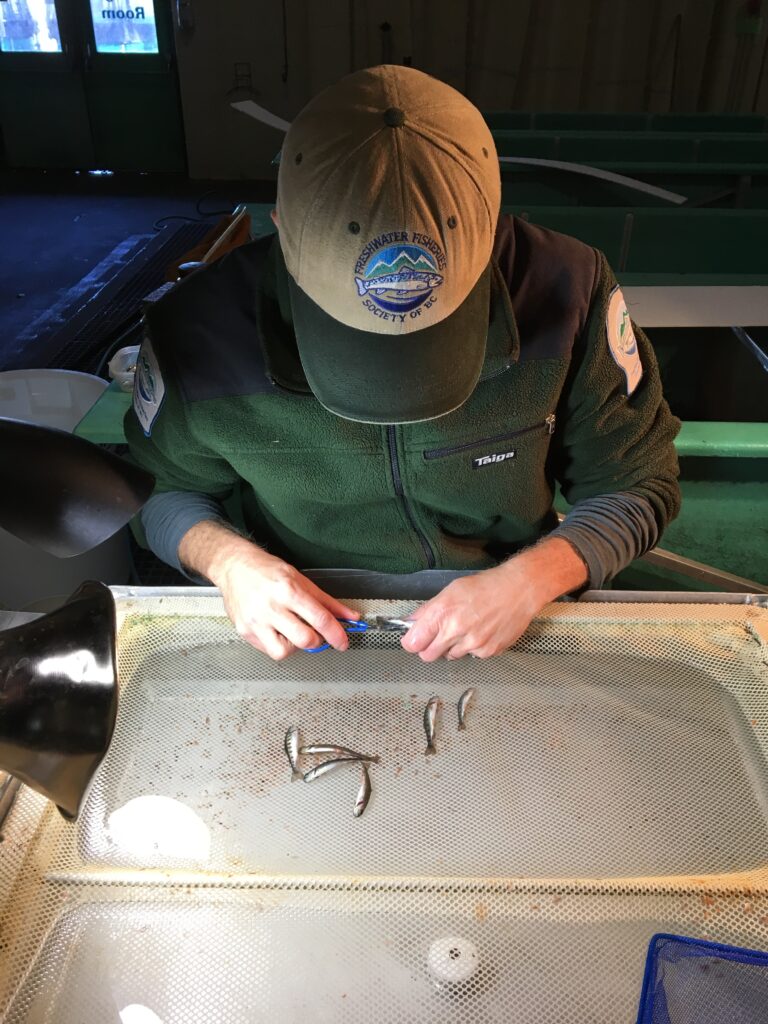
Kokanee Rearing
Over the winter, kokanee spawned the previous fall have grown big enough to be moved into ponds, and receive their first feeding. These kokanee will continue to be grown until May, when they will be released into lakes all over the province. The Clearwater and Kootenay hatcheries have the primary responsibility for the kokanee program.
Author: staff, Freshwater Fisheries Society of BC
